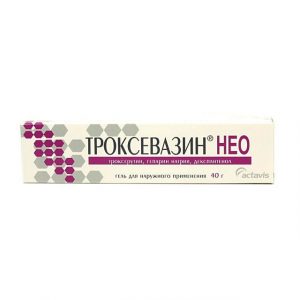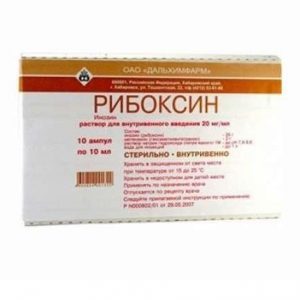Description
Latin name
Cardiomagnyl
Release form
Film-coated tablets.
Packing
100 pcs. – brown glass bottles (1) – packs of cardboard.
Pharmacological action
NSAIDs, antiplatelet agent. The mechanism of action of acetylsalicylic acid is based on the irreversible inhibition of the COX-1 enzyme, as a result of which thromboxane A2 synthesis is blocked and platelet aggregation is suppressed.
It is believed that acetylsalicylic acid has other mechanisms of suppressing platelet aggregation, which expands its scope in various vascular diseases. Acetylsalicylic acid also has anti-inflammatory, analgesic and antipyretic effect.
Magnesium hydroxide, which is part of Cardiomagnyl, protects the gastrointestinal mucosa from acetylsalicylic acid.
Pharmacokinetics
Absorption
After oral administration, acetylsalicylic acid is absorbed from the digestive tract almost completely.
The bioavailability of acetylsalicylic acid is about 70%, but this value is characterized by significant individual variability due to presystemic hydrolysis in the mucous membranes of the gastrointestinal tract and in the liver with the formation of salicylic acid under the action of enzymes. The bioavailability of salicylic acid is 80-100%.
Metabolism and excretion of
T1 / 2 acetylsalicylic acid is about 15 minutes, because with the participation of enzymes, it is rapidly hydrolyzed to salicylic acid in the intestines, liver and blood plasma. T1 / 2 of salicylic acid – about 3 hours, but when taking acetylsalicylic acid in high doses (> 3 g), this indicator can significantly increase as a result of saturation of enzyme systems.
Magnesium hydroxide (in applicable doses) does not affect the bioavailability of acetylsalicylic acid.
Indications
Primary prevention of cardiovascular diseases such as thrombosis and acute heart failure with risk factors (e.g. diabetes, hyperlipidemia, hypertension, obesity, smoking, advanced age)
prevention of recurrent myocardial infarction and blood vessel thrombosis
prevention of thromboembolism after vascular surgery (coronary artery bypass grafting, percutaneous transluminal coronary angioplasty)
unstable angina pectoris.
Contraindications
Hypersensitivity to ASA, excipients Cardiomagnyl and other NSAIDs
cerebral hemorrhage
bleeding tendency (vitamin K deficiency, thrombocytopenia, hemorrhagic diathesis)
bronchial salicylates and NSAIDs induced
erosive and ulcerative lesions of the gastrointestinal tract (acute phase)
gastrointestinal bleeding
severe renal failure (Cl creatinine – <10 ml / min) pregnancy (I and III trimesters) lac 6-phosphate dehydrogenase simultaneous administration with methotrexate (> 15 mg per week)
children under 18 years of age.
With caution, the drug should be prescribed for gout, hyperuricemia, a history of ulcerative lesions of the gastrointestinal tract or bleeding from the gastrointestinal tract, renal and / or liver failure, bronchial asthma, hay fever, nasal polyposis, allergic conditions, and in the second trimester of pregnancy.
Use during pregnancy and lactation
The use of salicylates in high doses in the first trimester of pregnancy is associated with an increased incidence of fetal developmental defects.
In the second trimester of pregnancy, salicylates can be prescribed only with a strict assessment of risk and benefit.
In the third trimester of pregnancy, salicylates in a high dose (> 300 mg / day) cause inhibition of labor, premature closure of the ductus arteriosus in the fetus, increased bleeding in the mother and fetus, and administration immediately before birth can cause intracranial hemorrhage, especially in premature babies.
The appointment of salicylates in the I and III trimesters of pregnancy is contraindicated.
Available clinical data are insufficient to establish the possibility or impossibility of using the drug during breastfeeding.
Before prescribing acetylsalicylic acid during breastfeeding, the potential benefits of drug therapy regarding the potential risk to infants should be evaluated.
Composition
1 tab.
acetylsalicylic acid 75 mg
magnesium hydroxide 15.2 mg
Excipients:
corn starch – 9.5 mg,
microcrystalline cellulose – 12.5 mg,
magnesium stearate – 150 μg,
starch.
Shell composition:
hypromellose (methylhydroxypropyl cellulose 15) – 460 mcg,
propylene glycol – 90 mcg,
talc – 280 mcg.
Dosage and administration
Tablets should be swallowed whole with water. If desired, the tablet can be broken in half, chewed or pre-ground.
For the primary prevention of cardiovascular diseases such as thrombosis and acute heart failure in the presence of risk factors (e.g., diabetes mellitus, hyperlipidemia, arterial hypertension, obesity, smoking, advanced age) appoint 1 tab. Cardiomagnyl containing acetylsalicylic acid in a dose of 150 mg on the first day, then 1 tab. Cardiomagnyl containing acetylsalicylic acid in a dose of 75 mg 1 time / day.
For the prevention of recurrent myocardial infarction and blood vessel thrombosis, 1 tab. Cardiomagnyl containing acetylsalicylic acid in a dose of 75-150 mg 1 time / day.
For the prevention of thromboembolism after vascular surgery (coronary artery bypass grafting, percutaneous transluminal coronary angioplasty), 1 tab. Cardiomagnyl containing acetylsalicylic acid in a dose of 75-150 mg 1 time / day.
With unstable angina, 1 tab. Cardiomagnyl containing acetylsalicylic acid in a dose of 75-150 mg 1 time / day.
Side effects of
The frequency of adverse reactions given below was determined according to the following: very often ( 1/10) often (> 1 / 100.1 / 1000.1 / 10 000,
Allergic reactions: often – urticaria, Quincke’s edema sometimes anaphylactic reactions
From the digestive system: very often – heartburn often – nausea, vomiting sometimes – pain in the abdomen, gastric ulcer and duodenal ulcer, gastrointestinal bleeding rarely – perforation of the stomach ulcer or duodenal ulcer, increased acne ivnosti liver enzymes rarely – stomatitis, esophagitis, erosive lesions of upper gastrointestinal strictures, colitis, irritable bowel syndrome.
From the respiratory system: often – bronchospasm.
From the hemopoietic system: very often – increased bleeding rarely – anemia very rarely – hypoprothrombinemia, thrombocytopenia, neutropenia, aplastic anemia, eosinophilia, agranulocytosis.
From the side of the central nervous system: sometimes – dizziness, drowsiness often – headache, insomnia rarely – tinnitus, intracerebral hemorrhage.
Drug Interaction
With the simultaneous use of ASA enhances the effect of the following drugs:
methotrexate – by reducing renal clearance and displacing it from the connection with
proteins of heparin and indirect anticoagulants – due to impaired platelet function and displacement of indirect anticoagulants from communication with
proteins thrombolocytes and antithrombotic drugs
hypoglycemic agents (insulin and sulfonylurea derivatives) – due to the hypoglycemic properties of ASA itself at high doses and displacement of sulfonylurea derivatives from of valproic acid
protein binding – by displacing it from protein binding.
The additive effect is observed with the simultaneous administration of ASA with ethanol (alcohol).
ASA attenuates the action of uricosuric agents (benzbromarone) due to competitive tubular elimination of uric acid.
By increasing the elimination of salicylates, systemic ACS attenuates their action.
Antacids and cholestyramine reduce the absorption of the drug.
Overdose
Symptoms of overdose of moderate severity: nausea, vomiting, tinnitus, hearing loss, dizziness, confusion.
Treatment: should wash stomach, appoint activated charcoal, conduct symptomatic therapy.
Symptoms of severe overdose: fever, hyperventilation, ketoacidosis, respiratory alkalosis, coma, cardiovascular and respiratory failure, severe hypoglycemia.
Treatment: immediate hospitalization in specialized departments for emergency therapy – gastric lavage, determination of acid-base balance, alkaline and forced alkaline diuresis, hemodialysis, administration of saline solutions, activated charcoal, symptomatic therapy.
When performing alkaline diuresis, it is necessary to achieve pH values between 7.5 and 8. Forced alkaline diuresis should be performed when plasma salicylate concentration is greater than 500 mg / l (3.6 mmol / l) in adults and 300 mg / l (2.2 mmol / l) in children.
Storage conditions
The drug should be stored in a dry, dark and out of reach of children at a temperature not exceeding 25 ° C
Expiration
5 years.
Deystvuyuschee substances
Atsetylsalytsylovaya acid, [magnesium hydroxide]
pharmacy terms and conditions without a prescription
dosage form
dosage form
tablets
Takeda GmbH, Russia




